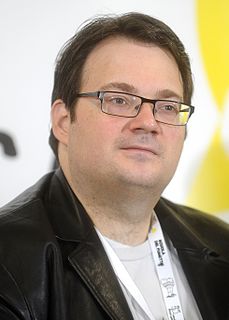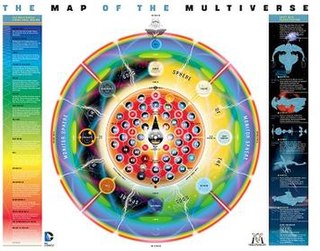 W
WIn fiction, canon is the material accepted as officially part of the story in an individual universe of that story by its fan base. It is often contrasted with, or used as the basis for, works of fan fiction. The alternative terms mythology, timeline, universe and continuity are often used, with the first of these being used especially to refer to a richly detailed fictional canon requiring a large degree of suspension of disbelief, while the latter two typically refer to a single arc where all events are directly connected chronologically. Other times, the word can mean "to be acknowledged by the creator(s)".
 W
WAmalgam Comics was a publishing imprint shared by DC Comics and Marvel Comics, in which the two comic book publishers merged their characters into new ones. These characters first appeared in a series of 12 comic books which were published in April 1996, between Marvel vs. DC #3 and DC vs. Marvel #4, the last two issues of the DC vs. Marvel crossover event. A second set of 12 comic books followed one year later in June 1997, but without the crossover event as a background. All 24 of these issues occurred between the aforementioned issues of DC vs. Marvel.
 W
WA bible, also known as a show bible or pitch bible, is a reference document used by screenwriters for information on characters, settings, and other elements of a television or film project.
 W
WIn the comic book fan community, the apparent death and subsequent return of a long-running character is often called a comic book death. A comic book death is generally not taken seriously by readers and is rarely permanent or meaningful other than for story or thematic purposes. The term is usually not applied to characters who have the ability to return from the dead as an established power or ability, such as Solomon Grundy or Ra's al Ghul.
 W
WA continuation novel is a canonical sequel novel with continuity in the style of an established series, produced by a new author after the original author's death.
 W
WBrandon Sanderson is an American author of epic fantasy and science fiction. He is best known for the Cosmere fictional universe, in which most of his fantasy novels, most notably the Mistborn series and The Stormlight Archive, are set. Outside of the Cosmere, he has written several young adult and juvenile series including The Reckoners, the Skyward series, and the Alcatraz series. He is also known for finishing Robert Jordan's high fantasy series The Wheel of Time and has created several graphic novel fantasy series including the White Sand and Dark One.
 W
WThe DC Animated Universe is a shared universe of superhero-based animated television series, produced by Warner Bros. Animation and based on characters that appear in American comic books published by DC Comics. The shared universe, much like the original DC Universe in comic books, was established by crossing over common plot elements, settings, cast, and characters.
 W
WElseworlds was the publication imprint for American comic books produced by DC Comics for stories that took place outside the DC Universe canon. Elseworlds publications are set in alternate realities that deviate from the established continuity of DC’s regular comics. The "Elseworlds" name was trademarked in 1989, the same year as the first Elseworlds publication.
 W
WThe term expanded universe, sometimes called an extended universe, is generally used to denote the "extension" of a media franchise with other media, generally comics and original novels. This typically involves new stories for existing characters already developed within the franchise, but in some cases entirely new characters and complex mythology are developed. This is not necessarily the same as an adaptation, which is a retelling of the same story that may or may not adhere to accepted canon. It is contrasted with a sequel that merely continues the previous narrative in linear sequence. Nearly every media franchise with a committed fan base has some form of expanded universe.
 W
WA fictional universe, or fictional world, is a self-consistent setting with events, and often other elements, that differ from the real world. It may also be called an imagined, constructed, or fictional realm. Fictional universes may appear in novels, comics, films, television shows, video games, and other creative works.
 W
W"Han shot first" refers to a controversial change made to a scene in the space-opera film Star Wars (1977), in which Han Solo is confronted by the bounty hunter Greedo in the Mos Eisley cantina. In the original version of the scene, Han shoots Greedo dead. Later versions are edited so that Greedo attempts to fire at Han first. Director George Lucas altered the scene to give Solo more justification for acting in self-defense. Many fans and commentators oppose the change, feeling it weakens Solo's character arc. The controversy is referenced in the 2018 film Solo: A Star Wars Story.
 W
WThe Hasbro Comic Book Universe (HCBU) is an American comic book franchise and shared universe created and published by IDW Publishing, based on various properties of the toy company Hasbro.
 W
WThe Marvel Cinematic Universe (MCU) is an American media franchise and shared universe centered on a series of superhero films produced by Marvel Studios. The films are based on characters that appear in American comic books published by Marvel Comics. The franchise also includes television series, short films, digital series, and literature. The shared universe, much like the original Marvel Universe in comic books, was established by crossing over common plot elements, settings, cast, and characters.
 W
WThe Multiverse, within DC Comics publications, is a "cosmic construct" collecting many of the fictional universes in which the published stories take place. The worlds in this multiverse share a space and fate in common, and its structure has changed several times in the history of DC Comics. The Multiverse was originally created by Perpetua, who is the mother of the Monitor, Anti-Monitor and World Forger.
 W
WIn serial fiction, the term "reboot" signifies a new start to an established fictional universe, work, or series. A reboot discards continuity to re-create its characters, plotlines and backstory from the beginning. It has been described as a way to "rebrand" or "restart an entertainment universe that has already been established".
 W
WRetroactive continuity, or retcon for short, is a literary device in which established diegetic facts in the plot of a fictional work are adjusted, ignored, or contradicted by a subsequently published work which breaks continuity with the former.
 W
WA sequel is a work of literature, film, theatre, television, music or video game that continues the story of, or expands upon, some earlier work. In the common context of a narrative work of fiction, a sequel portrays events set in the same fictional universe as an earlier work, usually chronologically following the events of that work.